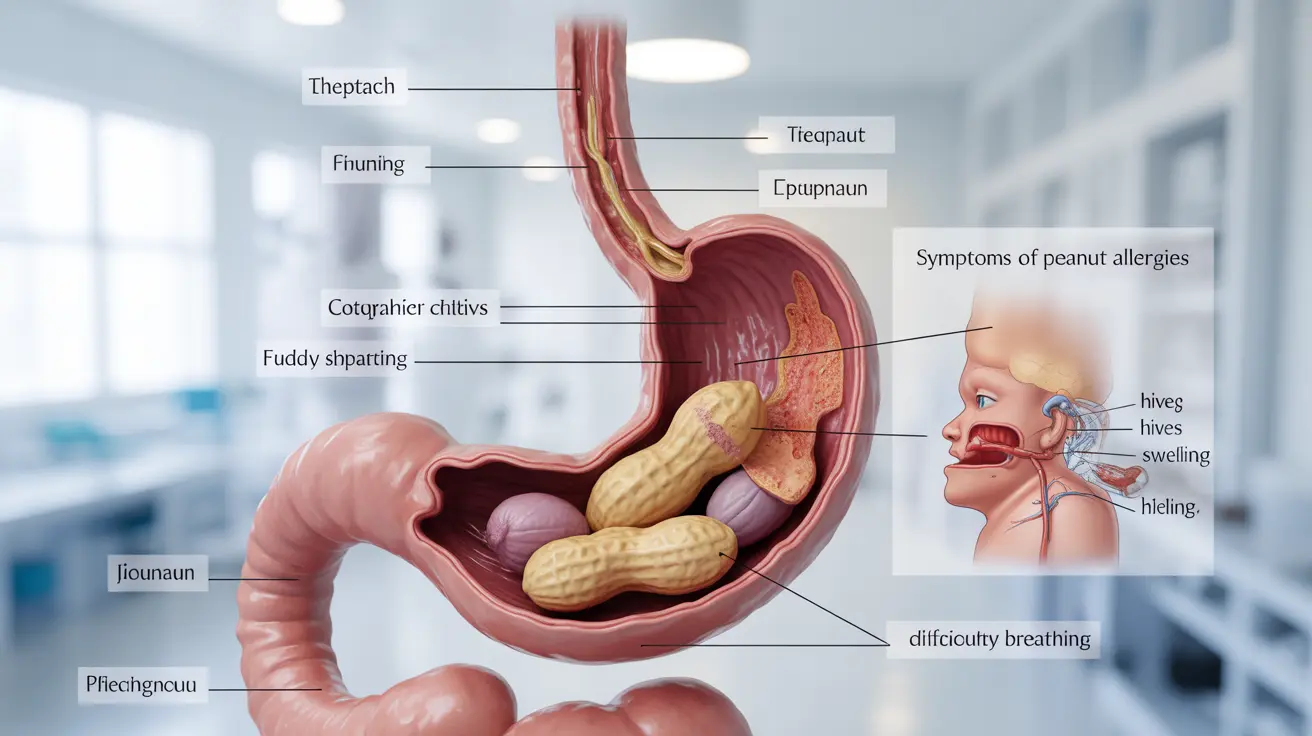Experiencing stomach pain after eating peanuts can be both uncomfortable and concerning. This symptom might indicate various conditions, ranging from mild digestive issues to serious allergic reactions. Understanding the underlying causes and recognizing when to seek medical attention is crucial for your health and safety.
In this comprehensive guide, we'll explore the different reasons why peanuts might cause stomach discomfort, how to distinguish between an allergy and intolerance, and what steps you should take to address these symptoms effectively.
Common Causes of Peanut-Related Stomach Pain
Several factors can contribute to stomach pain after consuming peanuts:
Peanut Allergy
An allergic reaction to peanuts occurs when your immune system mistakenly identifies peanut proteins as harmful substances. This reaction can cause immediate or delayed stomach pain, along with other potentially serious symptoms.
Peanut Intolerance
Unlike an allergy, peanut intolerance typically causes digestive symptoms without involving the immune system. This condition may result in stomach pain, bloating, and discomfort but usually isn't life-threatening.
Other Digestive Issues
Sometimes, stomach pain after eating peanuts might be related to their high fat content or fiber, especially when consumed in large quantities. This can affect people with sensitive digestive systems or existing gastrointestinal conditions.
Identifying Peanut Allergy Symptoms
Recognizing the signs of a peanut allergy is essential for proper diagnosis and treatment. Common symptoms include:
- Stomach pain and cramping
- Nausea and vomiting
- Diarrhea
- Skin reactions (hives, redness)
- Difficulty breathing
- Throat tightness
- Coughing or wheezing
Diagnosis and Testing
If you suspect a peanut allergy, several diagnostic approaches may be used:
- Skin prick tests
- Blood tests for specific antibodies
- Oral food challenges (under medical supervision)
- Detailed medical history evaluation
Managing Peanut-Related Symptoms
The appropriate management strategy depends on whether you have an allergy or intolerance:
For Allergies
Strict peanut avoidance is typically necessary, along with carrying emergency medication like epinephrine auto-injectors. Working with an allergist can help develop a comprehensive management plan.
For Intolerances
People with peanut intolerance might be able to consume small amounts or specific forms of peanuts. Keeping a food diary can help identify tolerance levels and trigger patterns.
Frequently Asked Questions
What causes stomach pain after eating peanuts and could it be a sign of peanut allergy?
Stomach pain after eating peanuts can be caused by either an allergic reaction or food intolerance. In allergic reactions, the immune system triggers inflammation that can cause stomach pain along with other symptoms. This could indeed indicate a peanut allergy, especially if accompanied by other allergic symptoms like hives or difficulty breathing.
How can I tell if stomach pain after eating peanuts is due to an allergy or a food intolerance?
An allergic reaction typically occurs quickly (within minutes to hours) and may include symptoms beyond the digestive system, such as hives, wheezing, or throat tightness. Intolerance usually only affects the digestive system, causing symptoms like bloating, gas, and stomach pain, and may take longer to develop.
What are the common symptoms of a peanut allergy besides stomach pain?
Common additional symptoms include skin reactions (hives, redness), respiratory issues (wheezing, coughing), swelling of the face or throat, dizziness, and in severe cases, anaphylaxis. Some people may also experience nausea, vomiting, or diarrhea.
How is peanut allergy diagnosed and managed to prevent severe reactions?
Peanut allergies are typically diagnosed through a combination of medical history, skin prick tests, blood tests, and sometimes oral food challenges. Management involves strict avoidance of peanuts, carrying emergency medication, and following an emergency action plan developed with healthcare providers.
What treatments are available for peanut allergy to reduce symptoms like stomach pain?
Treatment options include avoiding peanuts completely, carrying emergency medications like epinephrine auto-injectors, and potentially pursuing oral immunotherapy under medical supervision. Antihistamines may help with mild symptoms, but severe reactions require immediate emergency treatment.




